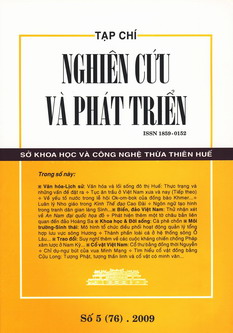Tục ăn trầu ở Việt Nam xưa và nay (Tiếp theo)/The Betel-Chewing Customs of Vietnam in Its Past and Present (Continued)
Tóm tắt
Dựa vào kết quả điều tra tại chỗ trong các năm 2002-2004 và 2006-2008 cùng các tài liệu liên quan, tác giả đã trình bày và thảo luận về tục ăn trầu ở Việt Nam từ thời đại Kim khí tới năm 2008. Những số liệu định lượng có được từ đầu thế kỷ XX cho biết diện tích trồng trầu cau đã giảm nhiều nhưng từ những năm 1960 đến nay số người ăn trầu có vẻ vẫn ổn định: chừng 10% những bà già trên 55 tuổi còn tiếp tục ăn trầu. Têm trầu là một đặc thù của tục ăn trầu Việt Nam và ngay từ 1885 một người Pháp, A. Landes đã gọi đó là một nghệ thuật lớn. Tác giả cho rằng có cách têm trầu truyền thống, cổ điển và cách têm trầu hiện đại (trầu cánh phượng với nhiều biến thể). Chỉ người Việt mới têm trầu một cách cẩn thận và khéo léo.
ABSTRACT
Based upon on-the-spot surveys during two periods (2002-2004 and 2006-2008) and on literature review, the author sketches an image of the customs of betel-chewing from the Metal Age up to present-days. Quantitative data from the beginning of the XXth century confirm a sharp decline of national areca and betel acreage but data from the 1960s show a seemingly stable of betel chewers’ contigent (about 10%) that consists of women from 55 up. The betel quid and betel roll preparation is a characteristic of our customs and from 1885, A. Landes, a French official in Cochinchine has called it a grand art. The author makes a clear distinction between the classic quid and roll preparation and the modern preparation art, of which comes out the famous betel quid in Phoenix Wing form and its numerous sub-forms. Vietnamese betel chewers are unique people who pay much attention to the clever preparation of the betel quid and its components.

